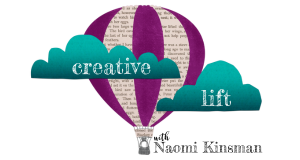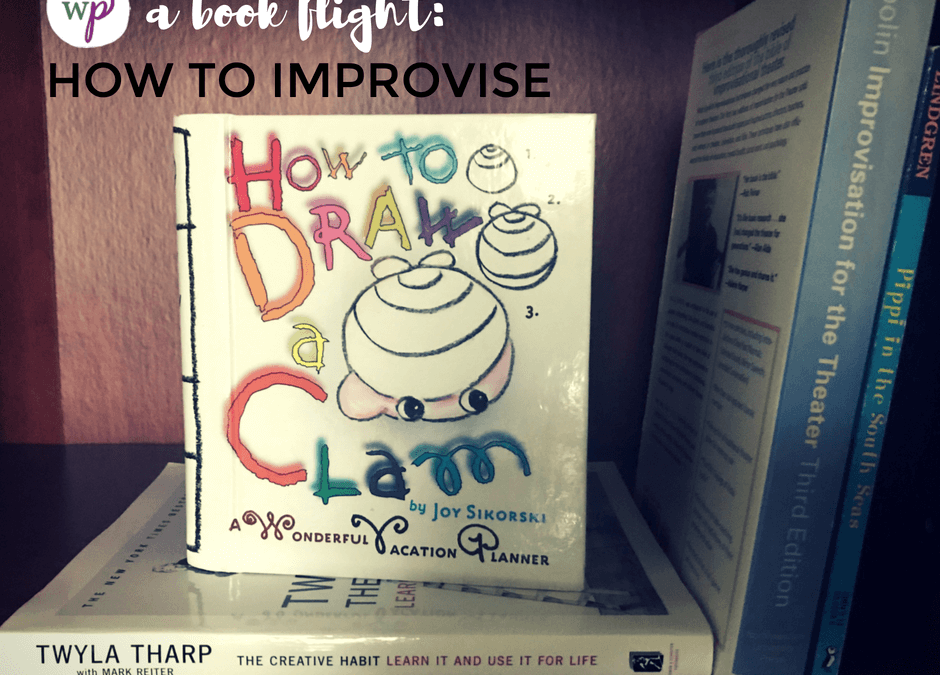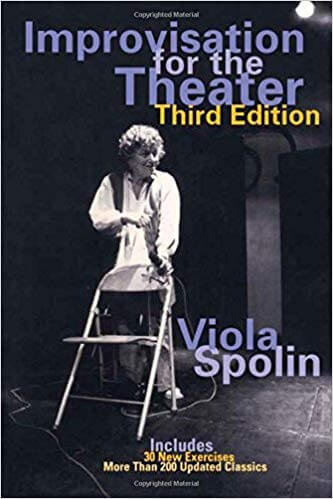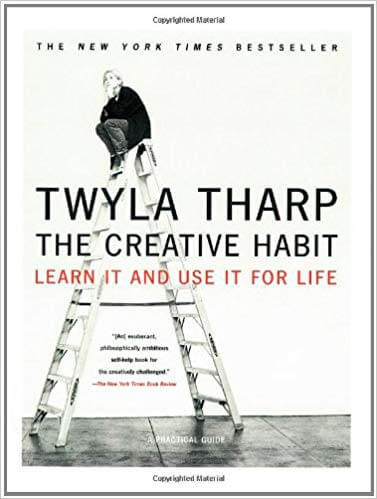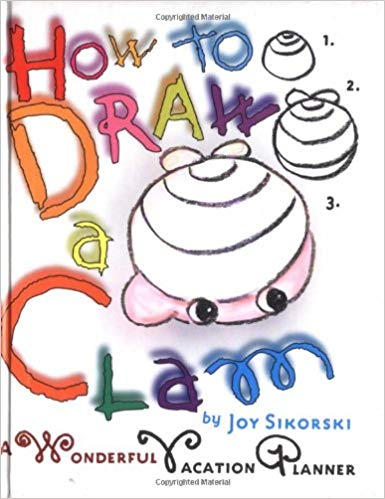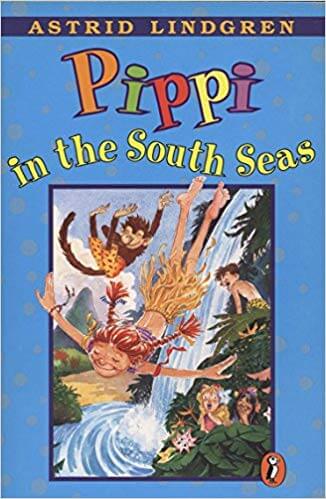For a long time, I didn’t understand improvisation. I thought it was the art of being hilarious on the spot, and the thought terrified me. When I (finally) dared to learn more about improv, I learned that improvisation was, in fact, terrifying, but not for the reasons I first believed. To improvise well, a player must let go and step into the unknown. In improv, we must listen to our fellow players, say yes to their ideas and add our own.
Improv taught me that play invites us to see past our masks and defenses to the truth of who we are. In spontaneous flashes, we tap into our intuition and discover that we know a lot more about the human experience than we might at first believe. Once I saw the transformative power of improvisation, I was hooked. I’ve been studying the art of improv ever since.
This book flight offers a variety of perspectives on the art of improv. The four titles include activities, games, stories, and of course, wisdom from master teachers on the art of saying, “Yes, and …” While I love each of these books individually, I love the four together even more, because of the ways they spark up against and illuminate one another.
How to Improvise: A Book Flight
Improvisation for the Theatre by Viola Spolin
When I encountered Viola Spolin’s thinking, and then put those principles into practice while training at Piven Theatre Workshop, my trajectory as an artist transformed. Spolin taught me to stop trying and to start experiencing. She taught me the value of opening my hands and letting go, rather than insisting on controlling the creative process. Through her instruction, I learned that developing a player’s mindset takes practice, and that the time invested is entirely worthwhile. Improvisation for the Theatre contains a wealth of wisdom on the craft of creativity and the art of wholehearted living. No matter your art form, this book is a must-read (and re-read!)
The Creative Habit: Learn It and Use It For Life by Twyla Tharp
When I think of improvisation, my thoughts first go to acting games or quick-drafting exercises. Twyla Tharp offers an entirely different vantage point as she describes improvisation from a choreographer’s point of view. So much is the same, and yet, the slightly different perspective helps me see my own work in new light.
How to Draw a Clam by Joy Sikorski
Filled with drawing prompts, adventure prompts, and games, this book is entirely unlike any book you’ve seen before. What struck me is how Joy Sikorski teaches the reader, without ever explicitly saying so, how to improvise your way through life. Flipping through this small book infuses my day with spontaneity and joy.
Pippi in the South Seas by Astrid Lindgren
Remember Pippi? When I thought about what fiction I wanted to include in the improvisation book flight, Pippi and her red braids came immediately to mind. This book is an excellent example of what it might look life to live a life filled with “yes, and …” thinking. When I find myself in need of a reminder to lighten up and be a little more adventurous, I tap into my inner Pippi Longstocking and dive exuberantly into my day.
If you pick up the books in this flight, I’d love to hear what you think. Try out some of the improv activities, and let me know how they go. And please share your ideas for other titles that ought to be part of this flight. I’m always on the hunt for an excellent read. Tag me on Twitter or Instagram, and let’s chat. Happy reading!
